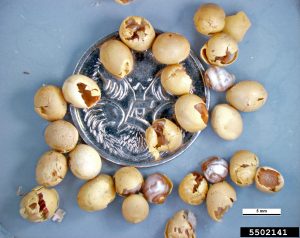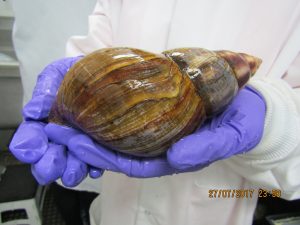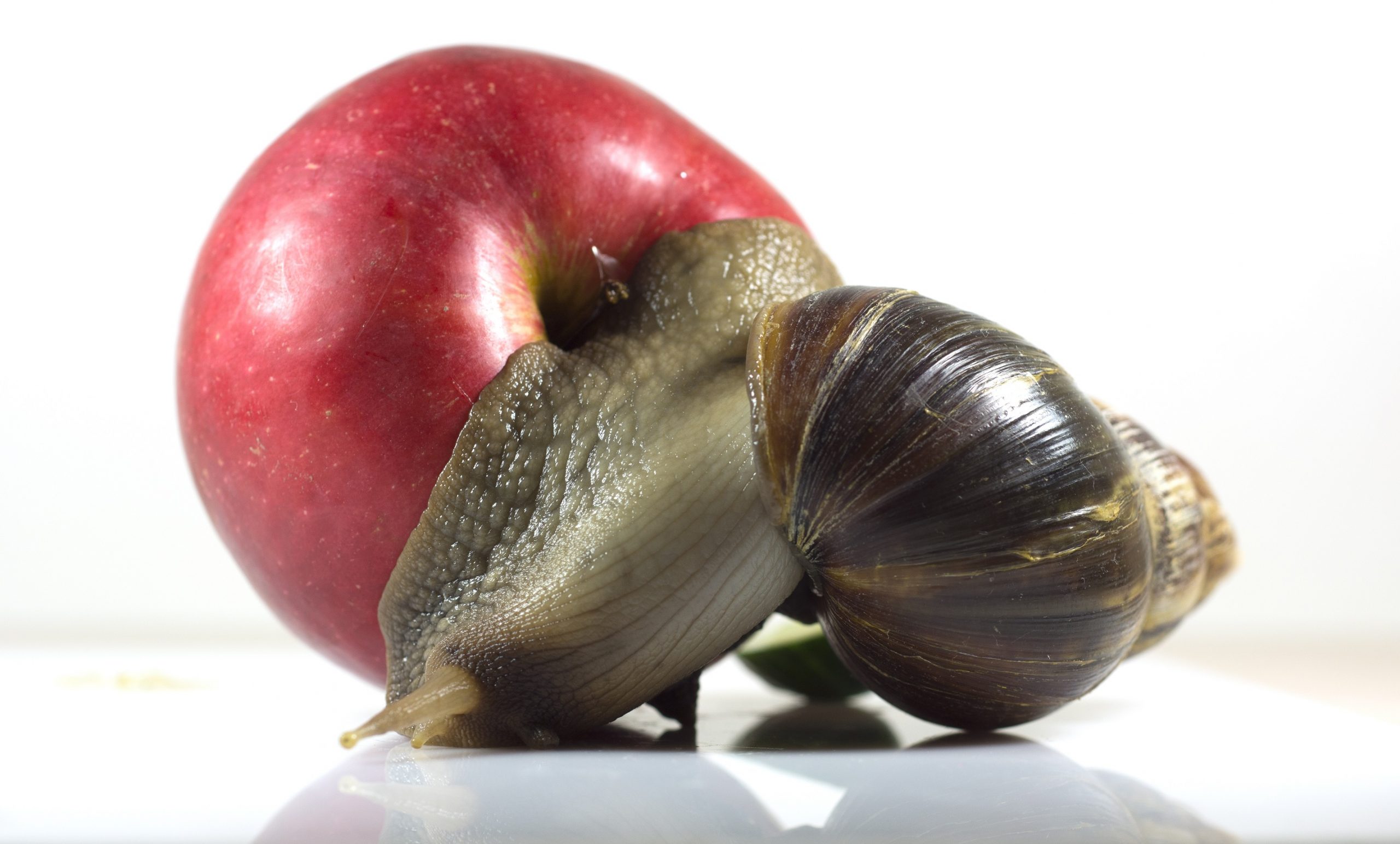Latest mail on the snail: Watch out for this giant pest!
Currently sitting at number 12 on the National Priority Plant Pests list, the Giant African Snail (Lissachatina fulica) poses a significant threat to vegetable growing regions around the country. The Front Line discusses the snail’s unwanted presence in Australia and the recent increase in interceptions with the Australian Chief Plant Protection Officer, Dr Gabrielle Vivian-Smith.
Giant African snail (GAS) is one of the world’s most invasive plant pests due to its insatiable hunger for over 500 plant species, including many important vegetable crops. Originating from East Africa, the snail has already established itself around the globe, including Asia, the Pacific, the Americas and parts of Europe. While the snail thrives in non-arid subtropical to tropical climates, it is still active below 10°C and can survive subzero temperatures by entering dormancy. Although it is yet to establish in Australia, GAS poses a significant threat to Australian plant production, the natural ecosystem and human health if it were to reach our shores.
An invasive, damaging pest
Giant African snails can completely wipe out crops with the capacity to eat entire plants, including the stem, leaves, flowers, fruits and even bark. The snail has a vast host range from fruit and vegetable crops such as bananas, citrus, beans, brassicas, cucurbits, sweet potato and solanaceous species, to nursery, ornamental and native plants. In countries where this giant pest is established, horticultural crops experience reductions in yield and quality, and in some instances, entire crop loss can occur early season.
The snail’s high reproductive capacity is the key driver behind our concern for this pest as they are difficult to eradicate. GAS are hermaphrodites, meaning they are able to self-fertilise. They have been observed laying up to 4,000 eggs per year in laboratory conditions. If a single snail were to enter Australia undetected or unreported, rapid increase in population could easily occur.
These snails can also be detrimental to human health. If handled incorrectly, GAS can transmit bacteria, parasites and disease. Most notably, GAS is a host of a harmful parasitic nematode (Angiostrongylus cantonensis) – commonly known as rat lungworm – that causes meningitis in humans.

Detections on the rise
Expert international hitchhikers, these snails commonly enter Australia as stowaways on imported farm machinery, vehicles and shipping containers, with the eggs transported in soil or plant imported goods. However, the biggest threat of an outbreak is the intentional and illegal importation of GAS for medicine, food or even as pets.
Since 2013, GAS interceptions at border have been on the rise with 28 in 2020. At the time of writing, there have been four this year (to April 2021). Despite Australia’s outbreak history suggesting most GAS interceptions occur at Queensland’s borders, Australian Chief Plant Protection Officer Dr Gabrielle Vivian-Smith said that the interceptions were made in a variety of imported cargo and at different border locations across the country.
Dr Vivian-Smith also noted that the increasing number of interceptions could be linked to the pandemic.
“There has been a bit of disruption and change in terms of container movement patterns and the ability of countries to apply their normal inspection protocols, so that is possibly one reason why we’re seeing an increase in Giant African snail detections,” she said.
However, irrespective to the pandemic, Australia does have a steady number of Giant African snail interceptions at the border each year.

Reducing biosecurity risks
Early detection and reporting are key to keeping these giant pests out of Australia.
Australia’s biosecurity system has strict import conditions and other measures to manage pest incursion risks. Shipping crates and containers from countries identified as high risk for GAS are routinely inspected. There are several established control procedures that are put in place upon detection of GAS, including physical inspections.
“A salt ring is applied to ensure live snails do not escape. Containers are fumigated, washed and reinspected to ensure freedom from live snails,” Dr Vivian-Smith explained.
Post-border, Australia has nationally consistent response guidelines under the Emergency Plant Pest Response Deed that can effectively respond to a pest incursion.
Dr Vivian-Smith also noted that while our biosecurity system helps manage the risk of GAS and other plant pests arriving in Australia, everyone – from importers and growers to the general public – has a role to play. Being aware of this giant pest increases our chances of detecting them before they start to cause any issues.
“Make sure you follow our conditions when importing cargo to Australia. Keep an eye out and report any potential biosecurity pests such as Giant African snails,” Dr Vivian-Smith said.
By implementing biosecurity best management practices, growers can greatly reduce the chance of the snail’s entry onto their properties.
Have you seen this international hitchhiker?
- A snail six times the size of the common garden snail.
- Narrow, conical shell with brown and cream bands.
- Shell length ranges from five to 20 centimetres.
- Eggs are ovular and cream-yellow, approximately five. millimetres in diameter and laid in batches of 100 to 400.
Previous outbreaks of the Giant African snail in Australia
- 1977 – Gordonvale, Queensland: Around 300 snails were found. This was followed by an intensive eight-month eradication program, which was successful.
- 2004 – Currumbin Valley, Queensland: A single snail found at a steel factory.
- 2013 – Brisbane, Queensland: A single snail found in a container yard.
Find out more
Any unusual plant pest should be reported immediately to the relevant state or territory agriculture agency through the Exotic Plant Pest Hotline (1800 084 881).
For further information, please contact AUSVEG on 03 9882 0277 or email science@ausveg.com.au. The Farm Biosecurity Program is funded by the Plant Health Levy.
Cover image: Giant African snail is destructive to many horticultural crops, including vegetables. Image courtesy of Shutterstock.

